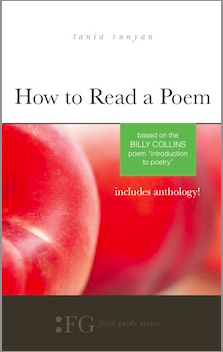My favorite poetic form, the sestina, gives me space to explore implication. Most often what happens is that inspiration visits for a moment. The one in which I decide I’ve stayed up too late talking. The one on the lawn of an old school dorm in winter. The one with a sidelong glance on sunny beach. When that moment of inspiration strikes, I can be lucky to cull a few well-formed lines before the muse whirls elsewhere.
Left to craft what I’ve been granted, I hone the February buds of insight—most often, for me, statements of an internal tension: I’ve been asking myself the same question, or Tell me everything you remember, or I still remember just how you look / naked. I work them until they’ve coalesced into a brief set of lines – and, then, I stop. Drop the matter. Sometimes it’s only a couple sentences, probably more fragments than anything else.
And it’s when I come back to those lines – an hour, a month or four later – that I count lines or adjust for rhythm, tailoring so those moments reveal as six changeable lines – because six is the sestina’s magic number. Think of your first stanza as a six-shooter, a revolver, and you start asking yourself how you will load it. Settle on a variety of words to end lines in ways that offer versatility in meaning and syntax. My favorite are often infinitive verb forms, because they double well as nouns. Example: question. It works well as an action, and equally well as an almost tangible thing.
Next comes the retrogradatio cruciata. If it sounds like J. K. Rowling magic, you can be sure it has a similar power. Each of those end words from the first stanza are rearranged in a very specific pattern. If we begin with end words 1 through 6, stanzas two and following look like this:
6 1 5 2 4 3 / 3 6 4 1 2 5 / 5 3 2 6 1 4 / 4 5 1 3 6 2 / 2 4 6 5 3 1
The final stanza pairs end words into a tercet – a three line stanza, where one word is embedded within the line and its partner ends the line, like this: 6 and 2 / 1 and 4 / 5 and 3
Seem complicated? I hope not. Once the words are in the order described above, you’re job is more than done for you. All you have to do is fill in the blanks, flesh out the lines with as much creativity and mischief as you can conceive.
Is a word not working the way you want it to? Suppose you ended a line with the word there, and you’re already getting tired of it. Split it to reveal an embedded word. Maybe a line could read “She arrived to Bath ere / she knew…” Now you’ve got a real, specific place to work with, without breaking form. And don’t forget homophones! You have at least two more built-in possibilities to there. (Their, they’re :))
Okay, nuts and bolts aside, if I feel a strong emotional charge in that first stanza, I can be tempted to go on and on, dwelling wherever the muse met me, without going further – or just leave it there – without offering much depth. I’ve found the sestina often draws something deeper from me in its mathematical process. It prompts me to elaborate, without explaining, as the original concept shifts like a Rubik’s cube over its course.
What I mean when I say the sestina allows space for implication is that the versatility of language is explored more readily in this form, the nuances of a very special split-second are offered the opportunity to stand in relief. All poetry should call attention to the importance of the moment, pausing the speed of life to discover the degrees of joy and sorrow in each second of the day. I’ve found, for me, the sestina reminds me to practice poetry as so much mindfulness.
Post by David K. Wheeler.
___
Write Your First Sestina: It’s a Matter of Pride
How to Read a Poem. The book teachers love!
- Taboo: Writing the Trees - June 8, 2012
- I See You in There: the Villanelle - December 2, 2011
- My Sestina is a Space Six-Shooter - July 15, 2011

Charity Singleton says
I am grabbing my new black journal, my favorite pen, and this post over the weekend and finally crafting a sestina. Even if it kills me.
Maureen Doallas says
Since LL posted that invitation, I’ve posted one sestina and written two more, which I’ll share in coming weeks. I’ve found a lot to like in the form.
Glynn says
And then some of us remain free verse sitcks-in-the-mud. Good post, Dave. I learned some things. I might even tackle one.
L. L. Barkat says
If it kills you, Charity, I fear you might have pointed the six-shooter in the wrong direction. 😉 Load the words and point them outwards! We want you here for the reading. 🙂
Maureen, I can’t wait to see your others!
L. L. Barkat says
Glynn, take six sticks with you. Play in the mud. See what happens. 🙂
Megan Willome says
OK, thanks for this post because I was completely confused.
Rosanne Osborne says
Here’s my sestina for today.
Rosanne Osborne says
One of the things I find intriguing about the sestina is the occasion of its genesis. From a character, a fragment of speech, an image, or a borrowed action it emerges in the mind as the formula fleshes out the story. This one emerged from a long-remembered phone call. http://poetryhawk.blogspot.com/2011/07/faulty-fences.html